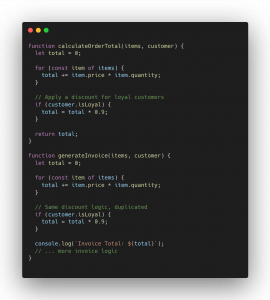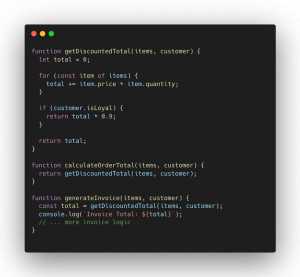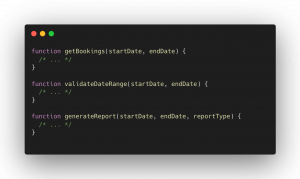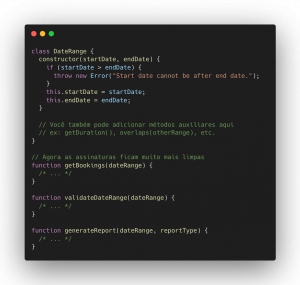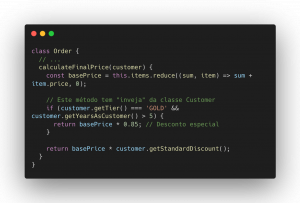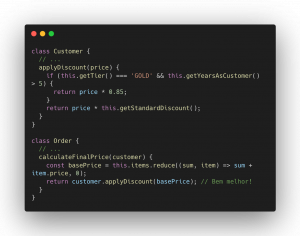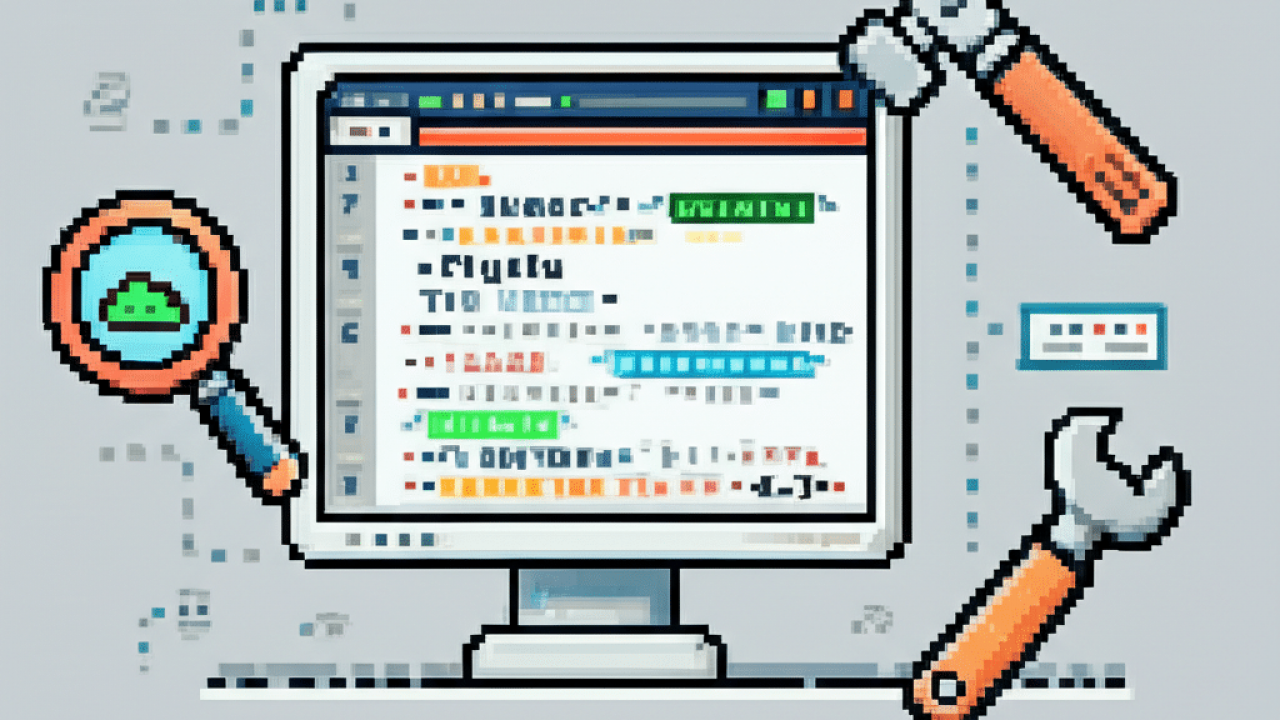Ever look at a piece of code and just… get a bad feeling? It works, it passes the tests, but something about it feels off. It’s a little too complicated, a bit clunky, or just plain hard to read.
That feeling, my friend, is your developer intuition picking up on a code smell. It’s not a bug, but it’s a sign that something could be wrong under the surface.
Think of code smells as symptoms of deeper issues, often related to technical debt. They’re the little architectural compromises and bits of untidiness that, left unchecked, grow into massive, unmaintainable problems. Ignoring them is like ignoring a strange noise in your car’s engine. Sure, you can still drive, but you’re probably heading for a breakdown.
A Field Guide to Common Code Smells
Once you learn to recognize code smells, you’ll start seeing them everywhere. That’s a good thing! It’s the first step to cleaning them up. Here are some of the most common culprits you’ll find in the wild, with examples of how to fix them.
Duplicated Code
This is the classic copy-paste-and-modify job. You see a block of logic you need, so you just duplicate it. The problem? If you need to fix a bug or change the logic, you have to remember to do it in every single place you pasted it. You won’t. Someone will forget.
The Smell:
The Fix (Extract Method):
Pull the duplicated logic into its own function. Simple, clean, and now you have a single source of truth.
Long Methods or Functions
A function that does ten different things is hard to understand, hard to test, and hard to reuse. If your function needs comments to break it up into sections, it’s a giant red flag that it should be multiple, smaller functions.
The Smell: A 50-line function called handleUserSignup that validates input, creates a user record, saves it to the database, sends a welcome email, and logs the event.
The Fix (Extract Method, again): Break it down. Each new function should do one thing and do it well.
validateSignupForm(data)createUserFrom(data)saveUser(user)sendWelcomeEmail(user)logSignupEvent(user)
Now your main handleUserSignup function just calls these smaller functions in order. It reads like a recipe, which is exactly what you want.
Large Classes
Similar to long methods, a “God Class” tries to do everything. A User class that manages authentication, profile data, billing information, and user settings is doing too much. This violates the Single Responsibility Principle and makes the class a brittle, tangled mess.
The Smell: A class with dozens of methods covering multiple, distinct areas of functionality.
The Fix (Extract Class): Break the monolith apart into smaller, more focused classes. The User class might hold the core data (ID, name), but the logic gets delegated:
Authenticatorhandles logging in and out.BillingManagerdeals with subscriptions and payments.ProfileServicemanages user profile updates.
Data Clumps
You see the same group of variables being passed around together through multiple method calls: (startDate, endDate), or (userStreet, userCity, userZip). This is a sign that those variables are a “clump” and probably belong together in their own object or class.
The Smell:
The Fix (Introduce Parameter Object):
Feature Envy: A Deceptive Code Smell
This one is more subtle. It happens when a method seems more interested in the data of another class than its own. It’s constantly calling getters on another object to perform some calculation. This is a sign that the logic might be in the wrong place.
The Smell: Imagine an Order class with a method to calculate a final price.
The Fix (Move Method): That discount logic is all about the customer. It belongs on the Customer class!
How to Detect and Deal With Smells
Finding smells is part skill, part art. Fixing them requires discipline.
Detection Methods
- Your Gut: This is your number one tool. If code feels confusing or fragile, pause and ask why. That’s the start.
- Code Reviews: A fresh pair of eyes is invaluable. “Can you quickly tell me what this function does?” If the answer is a long pause followed by “uhhh…”, you’ve probably found a smell.
- Static Analysis Tools: These are your automated detectives. Tools like SonarQube, CodeClimate, and linters (ESLint, RuboCop) can be configured to flag common smells like high cyclomatic complexity (too many branches), long methods, and duplicated code. Integrate them into your IDE and CI/CD pipeline.
Strategies for Effective Refactoring
Once you’ve found a smell, don’t just dive in and start changing things. That’s how you introduce bugs.
- Have a Safety Net: Before you refactor, make sure you have solid test coverage for the code you’re about to change. Your tests are the guardrails that prove you haven’t broken anything. Refactoring without tests isn’t refactoring; it’s just… changing stuff and hoping for the best.
- Work in Small Steps: Don’t try to fix a massive God Class in one go. Extract one method. Rename one variable. Run the tests. Commit. Small, incremental changes are safer and easier to review.
- Prioritize: You can’t fix everything at once. Start with the code that’s causing the most pain—the parts of the system that are changed most frequently or are the source of the most bugs.
Playing the Long Game: Prevention
The best way to deal with code smells is to prevent them from happening in the first place. This isn’t about writing “perfect” code from day one; it’s about building healthy team habits.
- Set Clear Coding Standards: Agree on a style guide and linting rules. Automate as much of this as possible. Consistency removes cognitive overhead.
- Foster a Culture of Constructive Reviews: Code reviews shouldn’t be about blame. They should be a collaborative process to improve the code and share knowledge. Frame feedback as questions: “I’m having trouble following this logic, could we break it down into a helper function?”
- Keep Learning: The craft of software development is always evolving. Read books like Martin Fowler’s Refactoring and Robert C. Martin’s Clean Code. Discuss design patterns with your team.
Ultimately, paying attention to code smells is about professionalism and respect—respect for your teammates, for your future self who will have to maintain this code, and for the product you’re building. It’s the difference between a codebase that’s a joy to work in and one that everyone is afraid to touch.
What to Do Next: A Quick Checklist
- ✅ Pick one small smell. Find a long method or a bit of duplicated code in your current project.
- ✅ Write a test. Ensure the current behavior is locked in.
- ✅ Do one refactoring step. Extract that logic into a new, well-named function.
- ✅ Run the tests. Did they pass? Great. Commit your change.
- ✅ Repeat. You just made the codebase a little bit better. Now go do it again.

